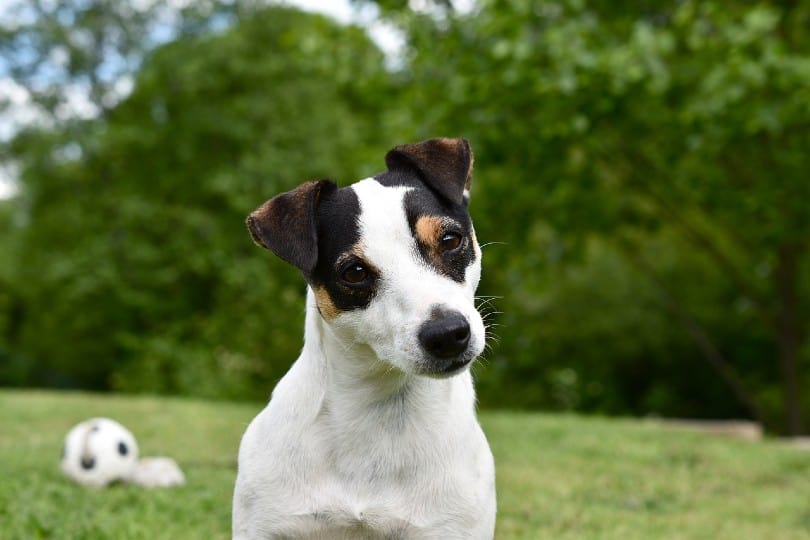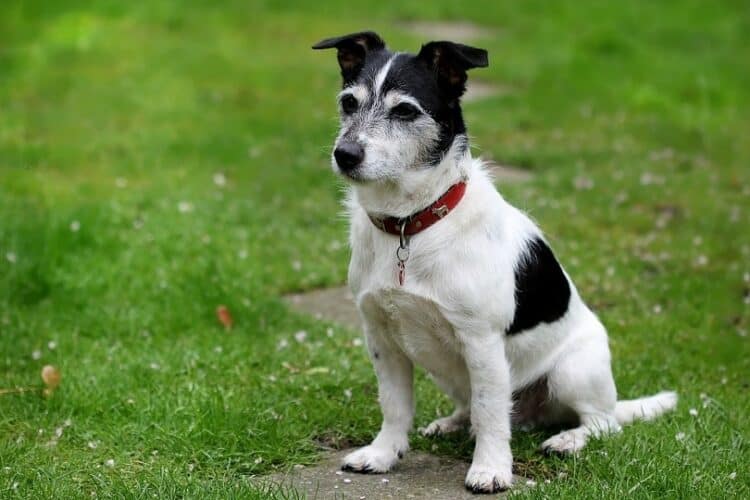According to the National Institute of Environmental Health Sciences, dog and cat allergies affect 10–20% of the world’s population. This explains the growing interest in so-called “hypoallergenic” breeds. Unfortunately, no dog breed is completely hypoallergenic, as the sources of allergens are found primarily in dander, saliva, urine, and blood. Additionally, other research suggests that people with allergies don’t necessarily react to a particular breed, but rather to specific dogs. In other words, you might be allergic to your neighbor’s Poodle but not to your cousin’s German Shepherd.
That said, some breeds that shed less may be a good option for some people, as it limits the spread of dander throughout the house. Unfortunately, that’s not the case with the friendly and energetic Jack Russell Terrier, which is considered a moderate to heavy shedder, depending on their coat type.
What Causes Pet Allergies?
Contrary to popular belief, dog and cat allergies are not directly caused by fur. The hairs are mostly carriers of allergens and help spread them around the house. It’s dander (small particles of skin composed of microscopic proteins) that’s responsible for pet allergies.
Dog allergen sources are also found in their saliva, urine, and blood. While allergen levels may differ from breed to breed, all breeds, even hairless dogs, can trigger allergies.
That said, some people have found that certain breeds do not trigger their allergies as much as others. This does not mean they are hypoallergenic dogs, however; rather, certain factors related to each dog seem to influence allergenicity more than the breed.
In other words, if you want to adopt a dog despite your allergies, don’t rely solely on the term, “hypoallergenic,” because you could be disappointed. However, if your main goal is to avoid having to vacuum three times a day, low-shedding breeds are the way to go.

Do Jack Russell Terriers Shed Frequently?
Jack Russell Terriers are not low-shedding breeds, but some varieties do shed less than others.
These lively and fearless little dogs have three different types of coats: smooth, rough, and broken. All three types are made up of a double coat with a softer fur undercoat. The smooth-coated Jack Russell Terrier tends to shed more and should be brushed and massaged with a rubber glove twice a week. Weekly brushing should be sufficient for rough and broken hair types unless a large amount of dead hair is trapped in the fur.
Dog Breeds That Don’t Shed (Too Much)
If you want to reduce the amount of hair — and dander — in your home, you can opt for one of the following breeds. However, keep in mind that any of these doggies are likely to cause an allergic reaction in some people, whether they are categorized as hypoallergenic or not:
- Airedale Terrier
- Boston Terrier
- Bichon Frisé
- Greyhound
- Poodle
- Yorkshire Terrier
- Dachshunds
- Schnauzer
- Shih Tzu
- Basenji
- Collie
- Portuguese Water Dog
Final Thoughts
Many dog lovers with allergies will try to find a breed that is less likely to trigger sneezing and watery eyes. But unfortunately, no breed is considered truly hypoallergenic, despite the claims of some breeders and experts. Also, the bubbly Jack Russell Terrier is not even one of these so-called hypoallergenic breeds, and the fact that they have moderate hair loss could make allergy symptoms worse in some people.
That said, there are a few options to reduce exposure to dog-related allergens, such as vacuuming often, using a portable air purifier, keeping the dog out of the bedroom, and bathing them once or twice a week. These are not bulletproof solutions, but they could facilitate cohabitation between allergy sufferers and their beloved companions.
Featured Image Credit: Pixabay














